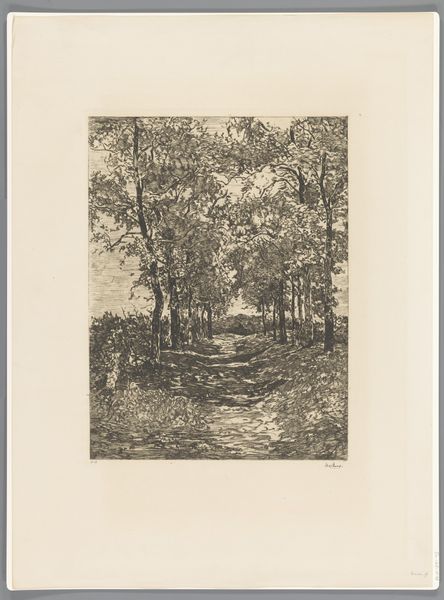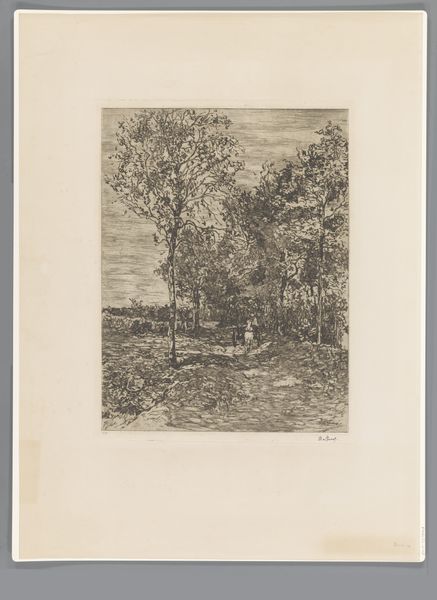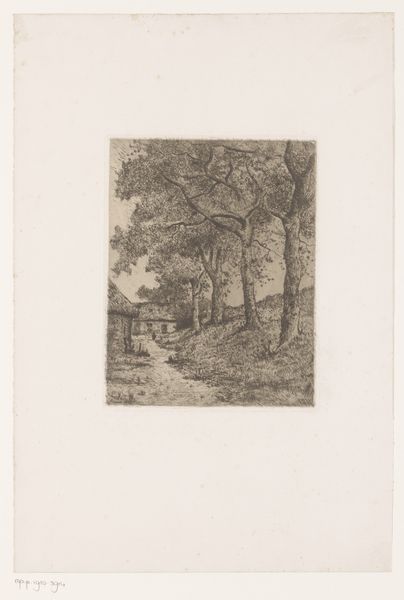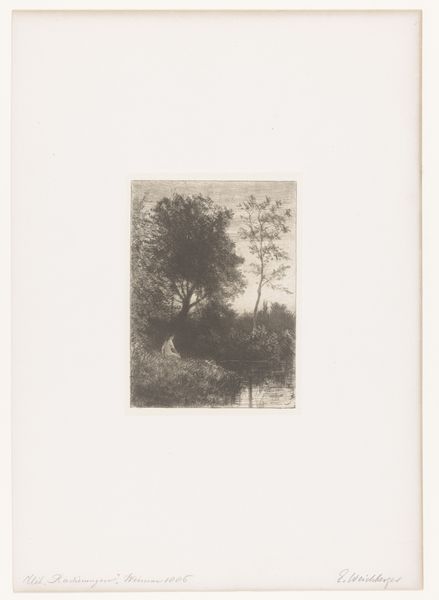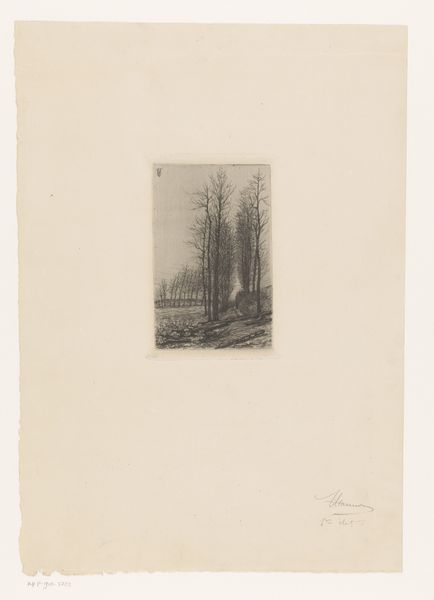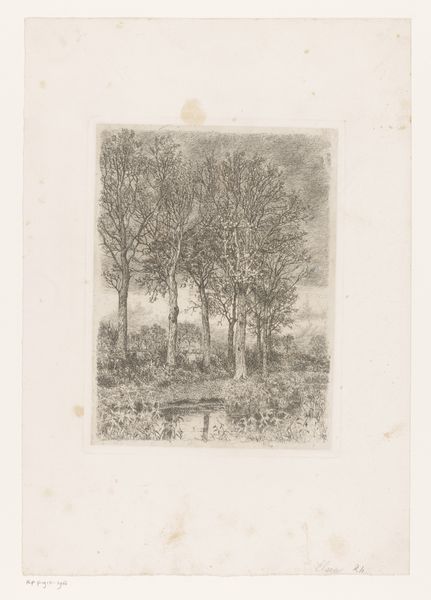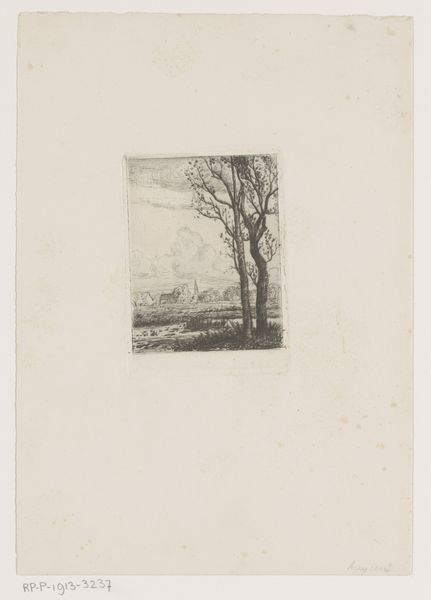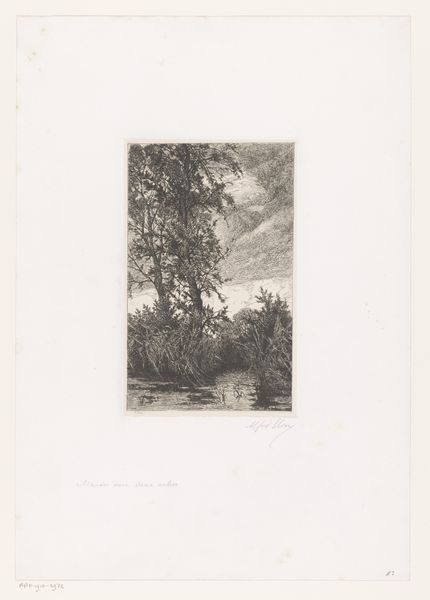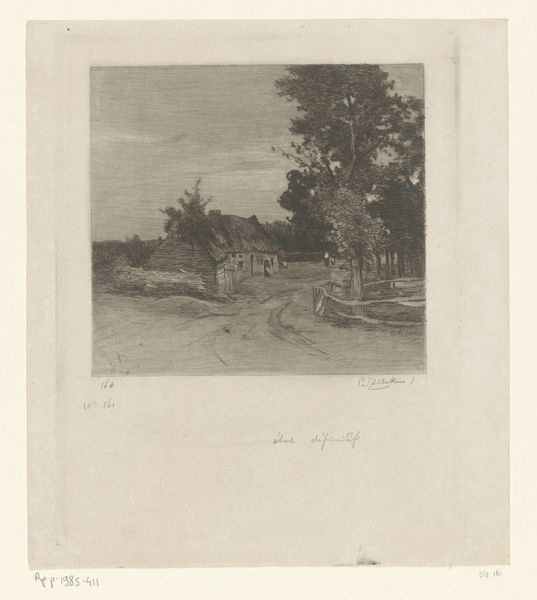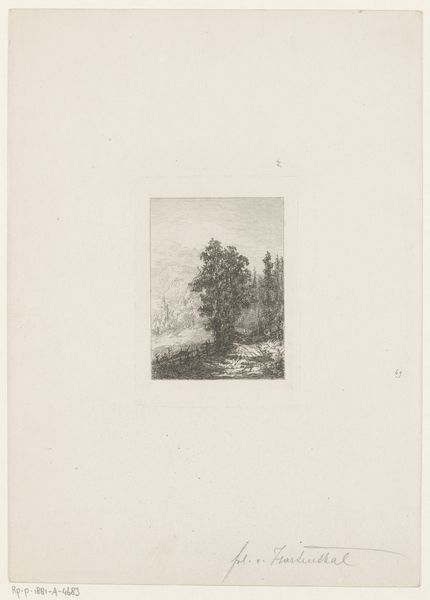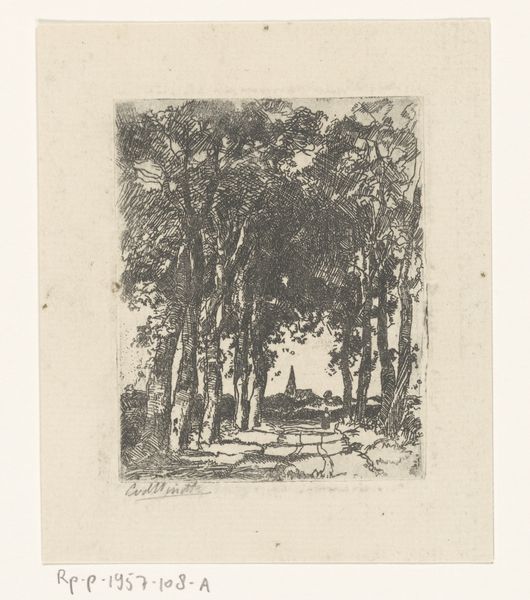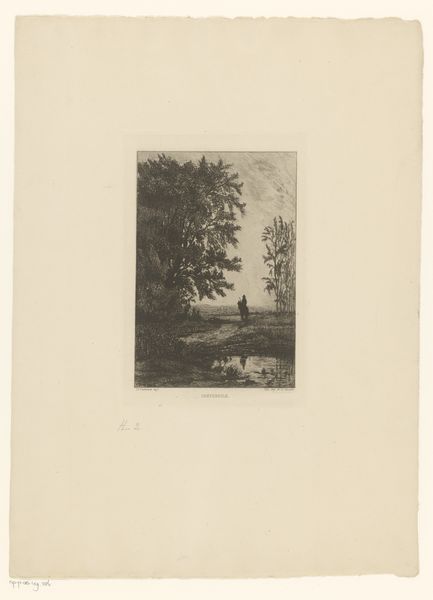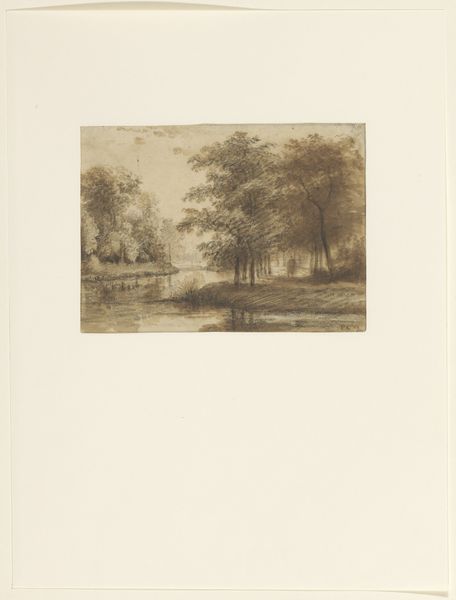
Dimensions: height 237 mm, width 159 mm
Copyright: Rijks Museum: Open Domain
Emile de Baré made this print, showing a small building on a hillside in a wooded area, using etching. Etching involves covering a metal plate with a waxy, acid-resistant ground. The artist then scratches an image into the ground, exposing the metal. When the plate is dipped in acid, the exposed lines are eaten away, creating grooves. Ink is then applied to the plate, filling these grooves. The surface is wiped clean, and the image is transferred to paper under high pressure. The result is a finely detailed image with a distinct graphic quality. The intricate lines and textures capture the scene's nuances, from the foliage to the subtle gradations of light. As with all printmaking, the character of the line is everything. And in the nineteenth century, a premium was placed on subtle, evocative mark-making, as distinct from the bolder forms of industrialized production. De Baré's choice of etching, with its inherently reproductive nature, reflects the increasing democratization of art. Printmaking made art more accessible, moving it beyond the confines of unique, handmade objects.
Comments
No comments
Be the first to comment and join the conversation on the ultimate creative platform.
